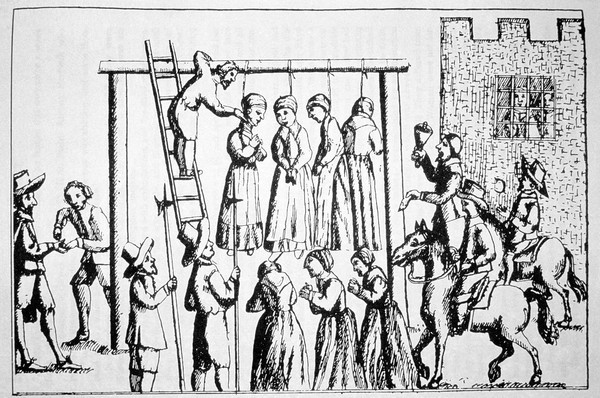James I and Witchcraft
Chapter 3 : Witch Hunts
When James became King of England upon the death of Elizabeth I in March 1603, he found his new subjects were far more sceptical about the existence of witches than those in Scotland. They soon changed their minds. Eager to ingratiate themselves with their new king, they scrabbled to convince him that they were every bit as concerned to eradicate witches from his new kingdom as he was.
There was a sudden rise in witchcraft trials,
inspired by James's new Witchcraft Act, passed a year after his accession,
which introduced far more severe penalties for witchcraft in all its
forms. Even Shakespeare got in on the
act. He penned his famous 'witch play', Macbeth, to curry favour with James,
and ensured that he made it shorter than his other plays because he knew the
king had little patience for the theatre.
Among the most notorious cases of James's reign were the Pendle trials of 1612, which resulted in ten people (including three generations of the same family) being hanged for witchcraft. In an even more controversial case seven years later, Joan Flower and her two daughters were hanged for bewitching to death the sons of the Earl of Rutland, a favourite of the king.

But by then, King James had started to lose interest in the so-called 'witch craze'. It was said that by the time of his death in 1625, he was 'more interested in deer hunting than witch hunting'. The country followed suit, and early in the reign of his son Charles I the witch hunts seemed set to be consigned to history. But they would return with a vengeance during the turmoil of the Civil War. James, it seems, had unleashed a terrible force that would blight society for many years to come.
Tracy Borman's Witches: James I and the English Witch Hunts was published by Vintage in October 2014.
Listen to our interview with Renaissance English History Podcast on James VI & I here






